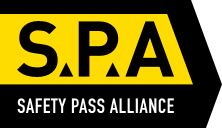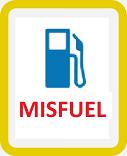The Health and Safety Executive has issued a safety alert to fleet operators to check the pressure relief valves on road tankers are operating correctly.
It follows an incident in 2020 when a valve got stuck open and was venting hazardous vapour.
Tank containers and road tankers used for flammable, corrosive and toxic liquids and gases will normally have a valve fitted to prevent damage to the tank from changes in the internal pressure. Haulage containers used for less hazardous liquids and gases may also have a valve.
These valves should be inspected and maintained in line with the manufacturer’s instructions.
In April 2020 the driver of an HGV hauling nitric acid noticed vapour coming from the tanker barrel in the area of the pressure/vacuum relief valve. He stopped at the roadside and rang the emergency services. Police closed the road and it remained closed until the tanker barrel had been fitted with a replacement valve. The tanker continued the short distance to its intended destination where it was safely discharged.
During what should have been a momentary operation to vent the road tanker, the vacuum relief element of the valve became stuck in an open position allowing an uncontrolled escape of hazardous vapour. The relief valve fitted to the tanker barrel had been modified in a way that made it unsafe.
Some valve designs require a special tool to dismantle them for servicing. Investigations by HSE found a technician had welded a nut on to the top of the valve to allow it to be dismantled without the use of a special tool.
The nut prevented the free movement of the valve stem, resulting in the valve sticking open and releasing hazardous vapours.
Users are advised to visually inspect the pressure/vacuum relief valves fitted to tank containers and road tankers. The inspection should establish if there have been any unauthorised modifications made to the valve, particularly items added to the valve to allow for easier dismantling.
Inspectors witnessing pressure testing of tanker relief valves may need further information and training so they can visually identify unsafe modifications made to valves.
Where valves have both a pressure and vacuum relief function, then both the over-pressure and under-pressure safety functions should be verified during the pressure test.
Anyone working on relief valves should be competent to do so. Valves should be serviced following the valve manufacturer’s guidance. Valves should not have temporary nor permanent modifications in order to by-pass the need for special tools to carry out the work. Where a modification is felt necessary, the valve manufacturer or similar competent person should be consulted.



















